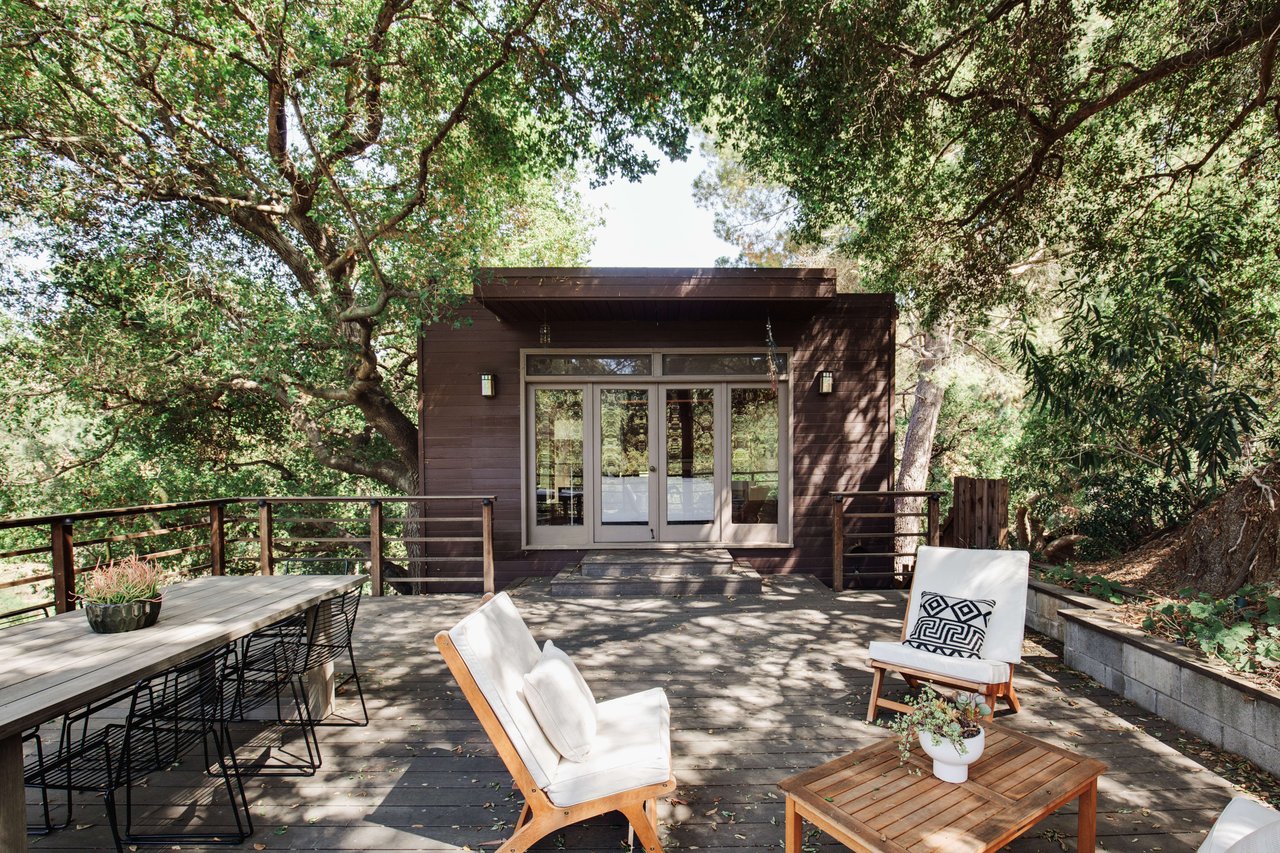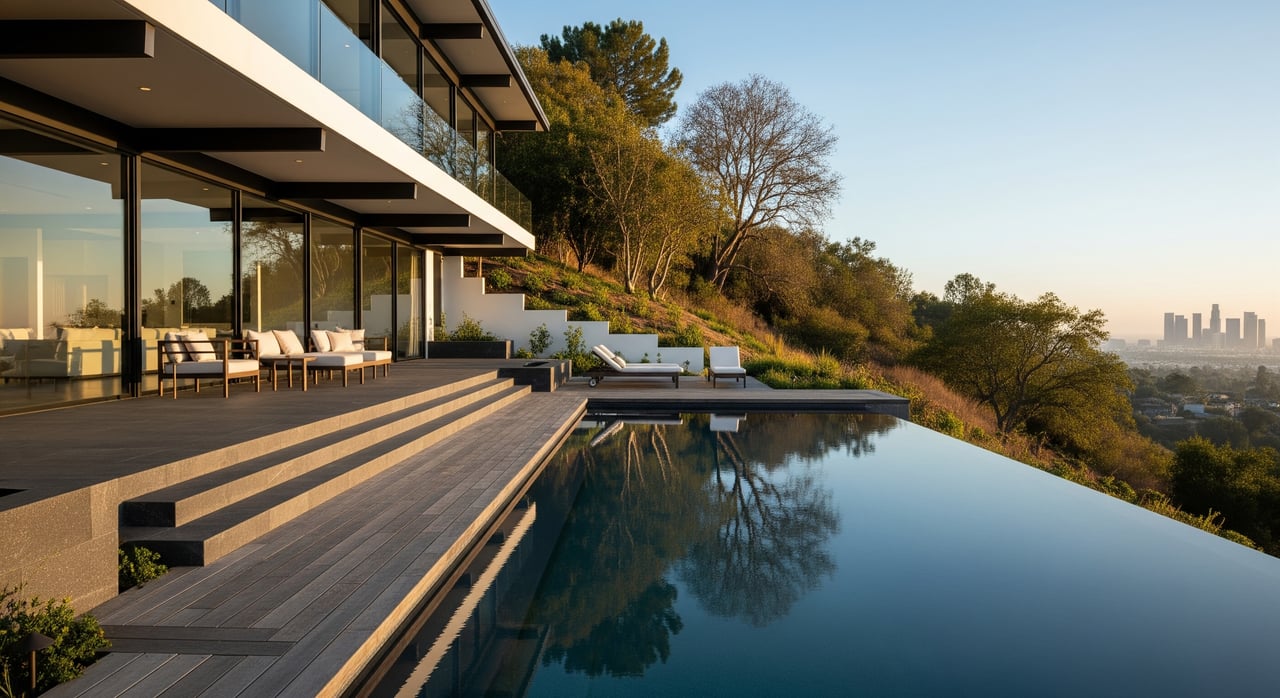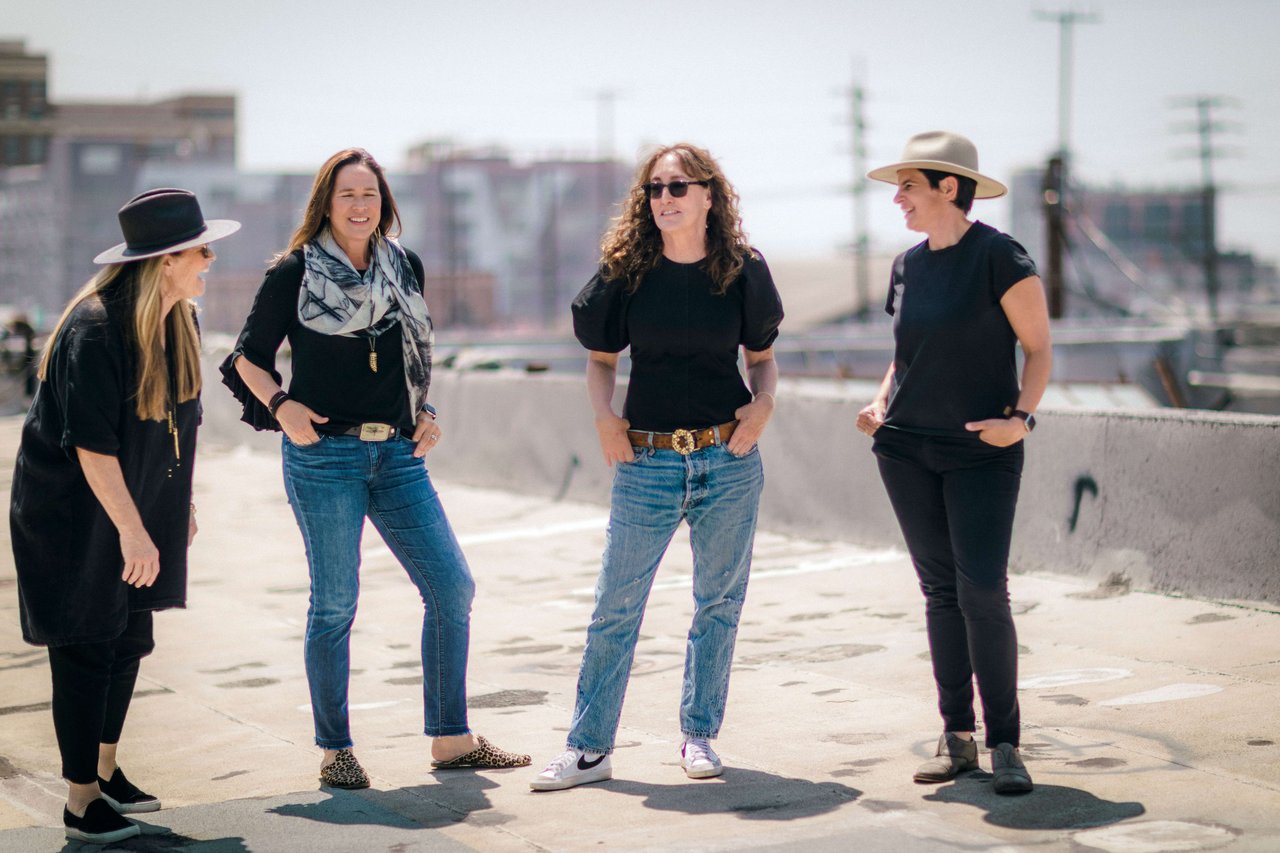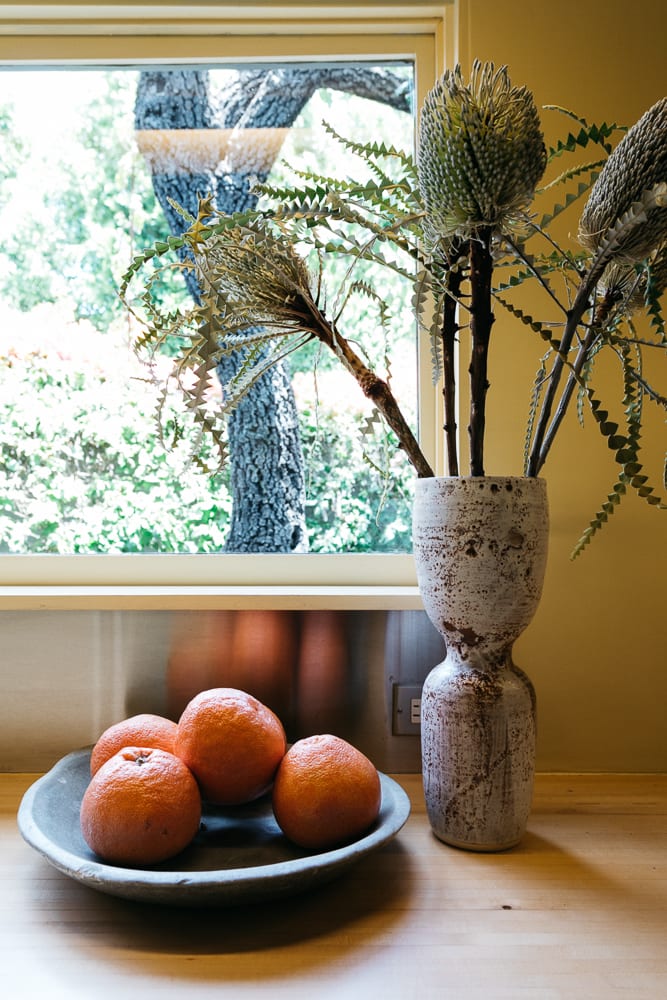The Essential Guide to L.a.’s Post-pandemic Real Estate Roller Coaster
Zoom Boom
While Palos Verdes might have the peacocks, horse trails, and ocean vistas, the commute to downtown or Century City is a deal killer for most, a fact that has suppressed prices relative to otherwise comparable communities. But the sudden uptick in remote working could have post-lockdown implications for the peninsula. “The area has the schools, the views, and amazing prices for what you get,” says real estate agent Tami Pardee, adding that clients were already decamping from Venice and Mar Vista before the pandemic. Anthony Poon migrated to Palos Verdes last year after owning homes on Bird Streets in the Hollywood Hills and Bel Air. “I sought out a tranquil neighborhood of nature and birds, wide streets, and rejuvenating calm,” says the architect, who purchased a 2,800-square-foot midcentury with exposed beams, tongue-and-groove ceiling planks, and a split-level open plan. “If this house was in my past neighborhoods, it would be literally three or even four times the price to obtain the same square footage, size of the lot, canyon views, and architectural character.” And while Palos Verdes’ Valmonte district doesn’t boast ocean views, it could hold the biggest potential for appreciation. “This is a neighborhood where people are walking up and down the streets. You see old people, young people, strollers, and dogs. In the evening adults are on lawn chairs, and in general, there are a lot of red Solo cups,” says real estate agent Cari Corbalis. “There’s a Little League field here with a snack shack that’s the social hub, even for people who don’t have kids.” That bygone charm has lured buyers from Manhattan Beach who don’t want to spend $6 million for a house with no yard, says Corbalis. “Here, they pay a fraction of that,” she notes of the approximately 400 homes that start in the mid-$1 million. “If people are going to start working from home, even part-time, suddenly Palos Verdes becomes one of Los Angeles’s most desirable places to live.”A Shifting Center
Amazon’s impending occupation of Culver City—Jeff Bezos’s behemoth will soon expand beyond 700,000 square feet of office space there—is just one of many tech giants moving into the area. Together with Apple, TikTok, and HBO, more than 7,000 new employees are scheduled to work in the incorporated city of 39,000 in the next two years. “That’s a remarkable amount of new jobs with remarkable companies,” says Eric Willett, a research director at CBRE. “[Neighboring] West Adams has a unique confluence of factors: a combination of cultural attractions, access to tech and creative talent as well as infrastructure. We don’t see underlying risk factors there, only huge potential for growth,” he says. Massive developments like Cumulus, which features a 31-floor high-rise and a seven-story building, will add 1,210 rental units this fall, while an additional 400 from a variety of projects are in the pipeline, says Willett. Many of the people moving into these new properties will be coming from Culver City, says Lina Lee, associate vice president of development at CIM. “These are people whose apartment has changed hands or whose rent has gone up dramatically.” But they won’t be heading to just West Adams. Leimert Park, View Park, Ladera Heights, Baldwin Hills, and Windsor Hills have all seen double-digit annual price jumps in the past three years. “There is nowhere else to go to the west, and there are hills to the north. The migration we’re going to see is to the southeast of Culver City,” says Lee. “Four years ago you could get a small three-bedroom home in West Adams for half a million dollars. Now it’s more like $850,000 or higher. That’s a year-over-year increase that far exceeds the rest of Los Angeles during the same time period.”Six- and Seven-figure Views
Since the last recession, the L.A. real estate market has become vista-obsessed, with promises of jetliner views commanding eight- and even nine-figure prices in places like Trousdale Estates and Sunset Plaza. Can’t afford those downtown-to-ocean panoramas? Second-tier alternatives are gaining status. “What you don’t get on the city side are the mountains. People are starting to appreciate the beauty of valley views,” says Compass real estate agent Tori Horowitz, who reports a surge of interest in Laurel Hills, a small section of Laurel Canyon off Mulholland Drive, which provides “wide views with layers of mountains. When the San Gabriels are snowcapped, it’s stunning.” Horowitz says home buyers are also attracted to the Laurel Canyon lore without the logistical hassles. “Laurel Hills has nicely paved streets and sidewalks as well as a proper sewer system,” she says of the area, where vista properties start in the mid-$2 million, a “fraction of what it would cost in the Bird Streets.” Agent Tami Pardee says landlocked Westsiders in Venice and Marina del Rey are seeking higher ground in Baldwin Hills. “You can get space and land for a lot less money there,” she says. “There are homes from $700,000 to $1.5 million, some of which have amazing city views.” Edel Legaspi and her husband, Christopher Courts, paid less than a million for their 1,600-square-foot midcentury ranch in Baldwin Hills three years ago. “At that point, we were priced out of Culver City,” says Legaspi. “It was this great surprise to discover this neighborhood. It’s quiet, with great walks, and our house has great city views. We can see the Hollywood Sign and sometimes the Griffith Observatory.” The higher streets, known as the Dons, have become a hotbed of activity: “Since we moved in, two houses next door and one across the street have been purchased by developers and flipped.”A Faltering Frontier?
Cape Cod Apocalypse
According to real estate agent Bret Parsons, an architectural correction is on the horizon for the supersize East Coast-style piles that have proliferated in Westside areas like Santa Monica, Brentwood, and Cheviot Hills. “These Cape Cods sell well the first time because they are new,” says Parsons, who has written many books about L.A.’s architectural history. “After that, the cavernous, wall-less rooms with the just-cooked-dinner odors permeating every room just won’t sell as well.” The kicker? “They cost a fortune to cool and heat,” he notes. Furthermore, historical neighborhoods bring a better real estate investment, according to Parsons. “I recommend Hancock Park-adjacent neighborhoods including Lafayette Square, Wilshire Park, and Country Club Manor, all [historical protection overlay zones]. These areas are desirable as tear-downs are scant, and residents love knowing their communities will look the same tomorrow.” The rampant Hamptonsization of Pacific Palisades has helped drive real estate values up in Sunset Mesa, an enclave above the Getty Villa that has escaped much (but not all) of the East Coast mania. “In the ’80s the neighborhood was known for its rowdy skateboarders, but now it’s a well-kept gem, almost a time capsule with its 1960s homes,” says resident Margot Jones. “Three years ago the average price was $1.6 million. Now it’s around $2.5 million and more.”The Next Arts District
“Relax. This Isn’t 2007.”
First-Time Buyer’s Market at Last?
Inglewood
Altadena
“With a huge range in prices, from bungalows starting in the $600,000s up to country-club-adjacent compounds in the $3 million, Altadena is attracting young buyers who want to be close to nature. It’s got the cafés and the walkability, but it also has the San Gabriel Mountains right there. From a starter bungalow, you can walk to trails. Not baby trails—world-class, amazing hiking and biking trails.” —Scott King, Deasy Penner & Podley.



